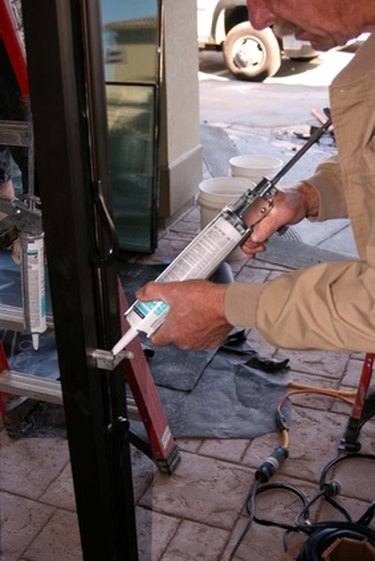
Caulk is used to fill in gaps between tile and siding and to seal leaks around windows and doors. Using and maintaining caulk prevents leaks and drafts. Caulk is a sealant, typically made from polyurethane and silicone. If you prefer, or in a pinch, several alternatives to caulk are available to use in its place.
Spray Foam
Video of the Day
Spray foam can be used in some places where you would normally use caulk. In fact, according to OldHouseWeb.com, expanding polyurethane foam is ideal for filling larger gaps around windows and doors. Latex spray foam is also available. Energystar.com recommends using spray foam to fill in gaps in the insulation in your attic and sealing the openings for plumbing vent pipes and electrical wires.
Video of the Day
Sealant Tape
Sealant tape is not as durable as caulk, but it can still effectively stop drafts and leaks. Sealant tape is particularly useful when you need to seal up leaks in your duct work. It is also used to bond glazing onto windows and skylights to prevent water leaks and to seal cracks on a metal roof. Likewise, it can be used to temporarily fix leaks and gaps in spots where caulk is more appropriate.
Peel-and-Stick Trim or Cord
Peel-and-stick sealer trim is made for use around bathtubs, windows and doors. It is designed to be applied directly over the seam you are sealing. When applied correctly, the sealer creates a waterproof barrier. It is also designed to resist mold and mildew. This trim is sometimes called weatherstripping or caulk cord.